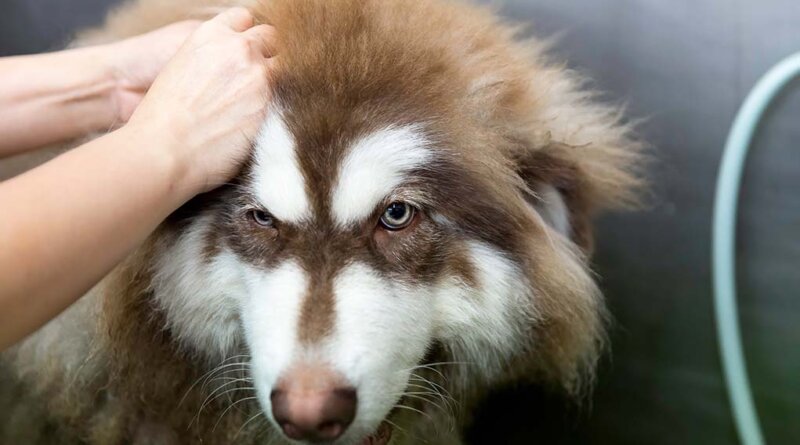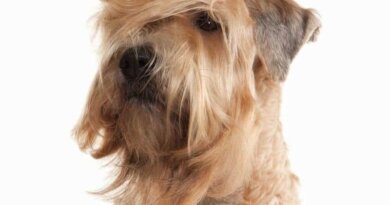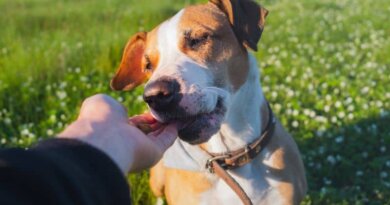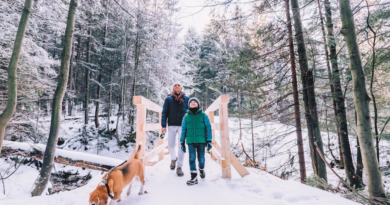39 Double Coated Dogs and How to Groom Them Properly
One of the first breeds that come to mind when people hear about double-coated dogs is Huskies. And while that’s a fitting response, not all double-coated breeds look the same as Huskies do.
Here’s everything you should know about double-coated dogs, which ones are and aren’t, and how to groom them.
Every specified class of canines has at least one or more double-coated dog breeds, meaning it isn’t just large canines – like the Husky – but also petite pups who have double coats.
Some breeds with a double coat can appear quite sleek, such as Beagles, a popular pet known for its hunting skills and Snoopy-fame more so than its coat.
With such a vast list of double-coated dogs, it can sometimes be difficult for the untrained eye to spot one, but it’s important that you know whether the dog is or isn’t double coated.
How to Tell Double Coated Dogs from Others
A dog with a double coat will have some defining, unique characteristics:
Possible dewlap
A dewlap is characterized by extra skin around the neck of a dog. This is common in working and hunting breeds, particularly if their origins are from colder regions because it serves as added insulation.
Not all double-coated dogs have a dewlap, but many dogs with dewlaps also have a double coat.
Seasonal shedding
Seasonal shedding differentiates from other forms of shedding in dogs by only occurring early to late spring to prepare the animal for the summer heat.
However, seasonally-shedding double coats do not suggest that shedding only occurs for a few months annually, but rather that it occurs in a higher frequency (especially if their grooming routine isn’t attended to).

Medium to the long outer layer of hair
The dog’s coat’s length or “shagginess” varies by breed, but most double-coated dogs have a fluffier appearance.
There are also dogs with double coats with wiry hair, many of which we see in the Terrier breed.
Presence of a topcoat
The topcoats will have different appearances, varying from breed to breed among double-coated dogs.
Most people associate the topcoat with an unruly shagginess or fluffiness; however, it can be short and sleek, which is seen with the American English Coonhound, for example.

This topcoat is also referred to as guard hairs. It is beneficial to bird hunting and retrieving breeds as it allows them to work through water without getting too weighed down or cold due to becoming wet.
Presence of an undercoat
The undercoat is a bedding of insulating fluff that regulates temperature, keeping the dog warm in chilly weather and cool in warmer weather.
It’s common for double-coated dog breeds to have undercoats, and it needs routine grooming attention in the form of brushing and bathing.
Common Double Coated Dog Breeds
Now that you know how to distinguish double-coated dog breeds from others, here’s a cheat sheet of the most common double-coated dogs you’ve probably encountered:
- Akita
- Alaskan Husky
- Siberian Husky
- Alaskan Malamute
- Chow Chow
- Finnish Lapphund
- Keeshond
- Shiba Inu
- Australian Shepherd
- German Shepherd
- English Shepherd
- Polish Lowland Sheepdog
- Old English Sheepdog
- Shetland Sheepdog
- Bernese Mountain Dog
- The Great Pyrenees
- Newfoundland
- Chesapeake Bay Retriever
- Nova Scotia Duck Trolling Retriever
- Golden Retriever
- Labrador Retriever
- Beagle
- American English Coonhound
- Border Collie
- Rough Collie
- Smooth Collie
- Bearded Collie
- Cairn Terrier
- Parson Russel Terrier
- Scottish Terrier
- Yorkshire Terrier
- Wirehaired Fox Terrier
- Cairn Terrier
- Welsh Corgi
- Pembroke Corgi
- Miniature Schnauzer
- Havanese
- Pomeranian
- Shih Tzu
Significance of a Double Coat to a Dog
While all dogs have natural oils and even bacteria that reside on their skin and fur to help keep them healthy and clean, double-coated dogs have the added advantage of extra insulation.
Single-coated canines also benefit from insulation, but it’s more comparable to a light fall jacket than to a heavy winter coat.
Many double-coated dog breeds originated from regions known for frigid temperatures. In contrast, double coats of the hunting breed benefit from added protection should they have a close encounter with what’s being hunted.
However, all these benefits for the dog mean extra work for the owner when it comes to grooming double-coated dogs.
Grooming Double Coated Dogs
There’s some controversy surrounding grooming double-coated dogs as many pet owners are not educated on the proper grooming methods.
Do NOT shave a double-coated dog.
For example, a family may live in Florida but own an Alaskan Malamute and believe they’re helping their furry companion to stay cool in the humid, tropical climate by shaving him. It’s a mistake.
Shaving a double-coated dog not only destroys the natural beauty and texture of the dog’s coat as it will never grow back the same, but it also exposes the dog to harmful ultraviolet rays from the sun.
The double coat is there for a reason.
While it’s true that the thick double coat insulates, trapping body heat close and keeping dogs warm in cold weather, it’s also true that the coat helps keep them cool by protecting their skin from the sun.
We may retreat under an umbrella or shade to avoid sun exposure and damage, but the canine double-coated breed lives its life with built-in armor.
After shaving double-coated dogs, their “armor” is now harmed, sometimes beyond repair, and their previously long, compacted coat is no longer there to shield sensitive skin from UV damage and heat.
This puts double-coated dogs in danger of sunburn as well as overheating, a serious condition that can be fatal if gone unacknowledged. Overheating is especially worrisome for young puppies or dogs with a high energy drive.
The more activity they endure, the hotter they become, sometimes playing to the point of complete exhaustion.
Brush double-coated dogs regularly.

Releasing dead hair allows new, healthy growth to occur in the hair follicles and the healthier a double coat, the better it is as regulating temperature.
This is even more important for double-coated dog breeds due to more hair on them.
Double coated dog breeds that go without weekly (some require it daily) brushing will suffer from a compacted undercoat.
A thick, overgrown undercoat cannot properly protect its wearer from overheating because it blocks airflow.
Airflow is the essential quality an animal’s coat can have as it now only protects them from heat exhaustion and keeps their skin healthy.
Thick, matted fur can trap moisture close to the skin causing dermal infections or inflammation such as eczema.
Use the right type of dog brush.
There are several dog brushes available, but some are better for doable coated dogs than others.
When brushing your double-coated dog, you can use a variety of tools and methods to loosen potential dead hair, but here are groomer’s recommendations:
A wire dog brushes are typically safe for all kinds of coat textures and lengths.
Much like a brush for human hair, this device features wire prongs that run through the hair, helping to detangle.
Wire brushes may or may not have plastic or silicone beads at their tips, giving the brush a more comfortable sensation and being more ideal for long coats as it won’t pull.
Bristles are best for canines with a short length as they efficiently separate hair follicles, motivating blood flow and removing dead hair.
Silicone prongs on the palm side of a grooming glove you wear may be more comforting to both you and your pet as it’ll feel like they’re enjoying a long petting session.
The rubbery texture of silicone is excellent at grabbing dead hair at the topcoat but not sufficient at loosening the undercoat and thus may be best suited for single-coated breeds rather than most double-coated dogs.

There are several de-shedding tools available, but the blade might be the best option for double-coated dogs. However, it’s not recommended as a de-tangler, as it could get caught in hair clumps and painfully rip them out.
Tangles should be gently dissected before brushing occurs by delicately pulling them apart using your fingers.
A long-pronged brush typically made of metal will help you get well into the undercoat and sift through its denseness to find dead hair.
These are typically a must-have for owners of double-coated dog breeds.
Common Questions about Dogs with a Double Coat
Still, have questions about the double coat on your dog? We have answers.
What Happens If You Shave a Double-Coated Dog?
As mentioned, you should NEVER shave a dog with a double coat. This is because it can cause long-term damage.
Essentially, your dog’s undercoat will regrow faster. It may even crowd out the guard hairs that grow more slowly.
This can lead to issues with your dog’s coat’s texture and color.
How Do You Know If Your Dog Is Double Coated?
The easiest way to tell if your dog has a double coat is based on his breed. You can also tell by looking at the fur.
Dogs with a double coat will not have straight hair, but the undercoat will be soft. The fur also tends to be longer and denser.
If your dog has a single coat, it will typically be straight and soft.
Do Double Coated Dogs Shed?
Yes, most dogs with double coats are shed twice every year. This is usually in the fall and the spring. During this time, they just shed their undercoat.
They also have regular shedding throughout the year, just like any other breed.
READ NEXT: 11 Steps for a Complete Dog Grooming Session [Infographic]





